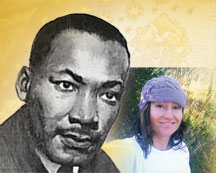Consciousness at SWC
- Home ›
- About Southwestern College and The New Earth Institute ›
- Mission and Philosophy ›
- Consciousness at SWC
Why Does Southwestern College Focus on “Consciousness”?
When we talk about “Consciousness,” we are pointing in the direction of heightened awareness, intentional living, mindfulness, and a holistic approach to the helping professions. When we are more fully conscious we are also honoring the resources that lie outside the realms of mainstream western scientific inquiry. Here we include spirit and spirituality, energy, intuition, vibration, and what physicist David Bohm called the “implicate order” of things. Interestingly, the perennial or ancient wisdom traditions, both east and west, have always recognized the centrality of these domains to human wholeness.
The Southwestern College focus on consciousness invites us to remember the unity and inter-connectedness of all life, and the multiplicity of dimensions and relationships that connect us to all that is, whether we choose to be aware of it or not.
Southwestern College students go through a rigorous program which challenges them to explore their belief systems, and to deeply re-examine their way of organizing and understanding reality. The journey leads them to more intentionally construct a new, more aligned understanding of themselves and their lives. They learn to discover, identify, and access the rich resources that are available to them for living a more fulfilling life.
Coming from this transformed place of heightened awareness and empowerment, SWC graduates are better equipped to create space for others to experience their own transformation or awakening, with fuller access to a greater array of resources for creating the life they want for themselves. This is deep work.
In the context of consciousness, students are asked to be inspired by a change-agent – somebody who, often against the grain of their culture and time, found the inspiration and strength to live authentically, aligned with their higher calling, and created change in the world. We invite you to become your own “change-agent” and to vision what you can do in the world as a leader, educator, healer, or therapist.
The strength gained, and the depth of understanding the student develops by discovering and owning their own potential to be a change agent, becomes integral to their work as a transformational leader and/or therapist.
 Southwestern College Santa Fe, NM
Southwestern College Santa Fe, NM



